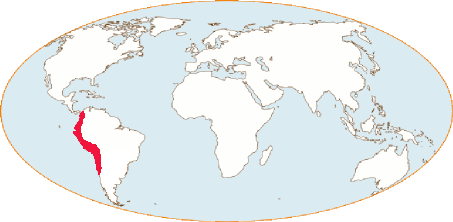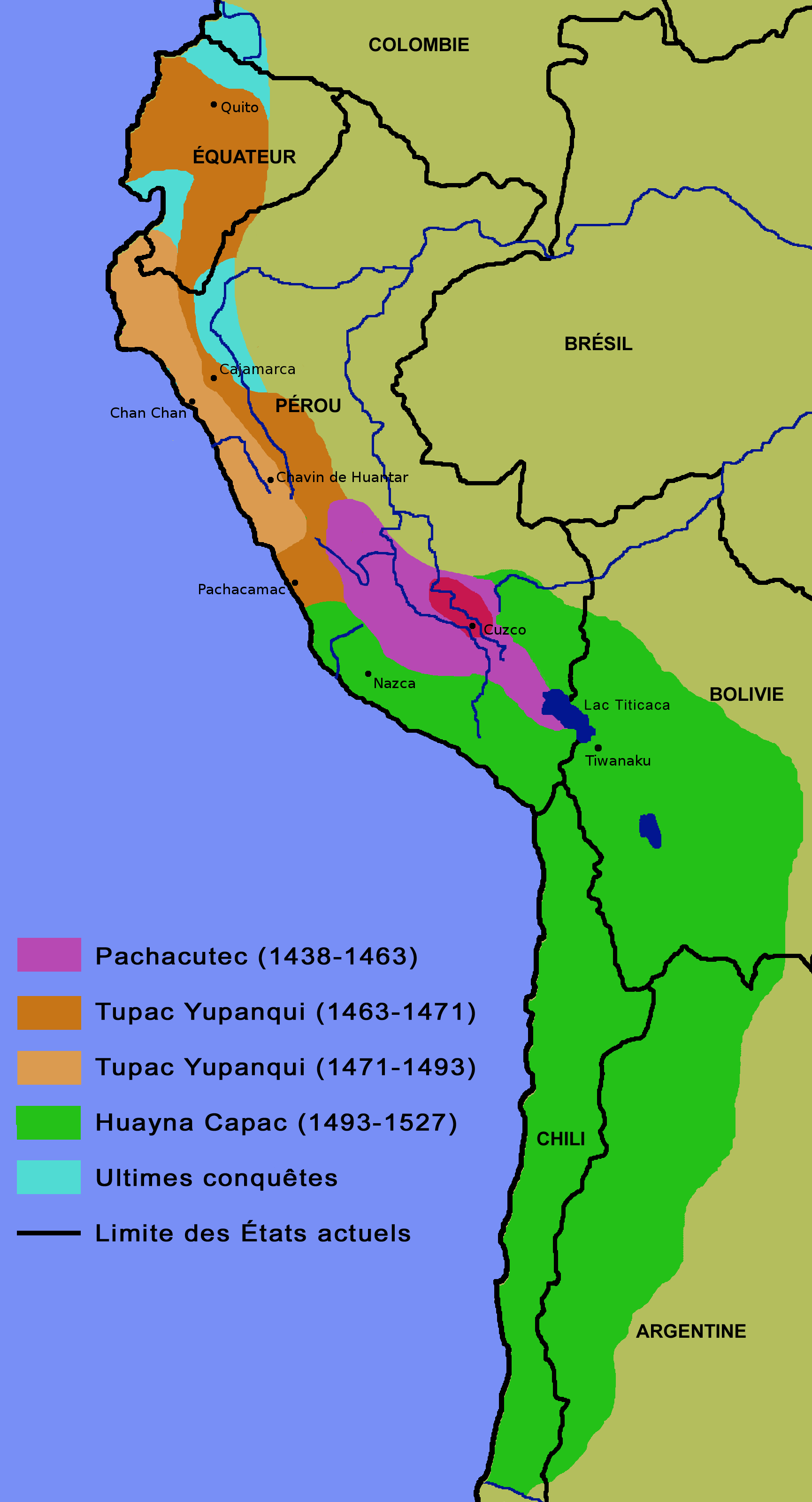The Inca Empire, 1438-1533 (South America).
The empire of the Incas, founded around 1400[1], extended at its height over nearly 4,000 km, following the contours of the Andean Cordillera from Colombia to Chile. The main inca (Sapa Inca) leads it from Cuzco.His authority (inca = lord in quechua) relies on the Inca ethnic group and the local chiefs of other ethnic groups rallied to the Inca power. The empire is divided into four regions (suyu ) supervised by an apu, member of the royal family : two "high" regions the Chinchay suyu and the Qulla suyu respectively in the north and south, two "low" regions Anti suyu and the Kunti suyu respectively in the east and west. The empire is called in Quechua Tawantin suyu, literally the "four regions".
These 4 suyu(s) are in turn subdivided according to the territories and traditional borders of the ancient kingdoms submitted by the Incas or having become tributaries of the Empire. A global imperial division (4 regions) is thus superimposed on the ethnic and political borders of the ancient kingdoms. This very dense territorial grid allows the Incas to control an immense empire, stretched along the Pacific, mountainous and divided into autonomous valleys, grouping together very heterogeneous ecosystems, from the tropical jungles of Colombia to the cold deserts of Chile. The imperial control, both political and military, is based on remarkable logistics. A vast network of roads, trails, granaries and post-relays allows the imperial envoys and armies to move quickly from one end of the Cordillera to the other, from its nerve centre of Cuzco. As we shall see, messengers and soldiers drank and fed from the corn storehouses built and supplied by local people along the empire's military roads.
The Incas continue the strong and centralizing regional policy of the twin kingdoms Wari-Tiwanaku. Great builders of cities and sanctuaries, the Wari has shaped the landscapes of present-day Colombia, creating vast agricultural terraces, irrigation systems and developed agricultural valleys. Further south, the Tiwanaku (Tihuanaco) culture centred on Lake Titicaca has itself succeeded in uniting many peoples in a strong regional political organisation. Such is the already highly structured geopolitical situation inherited by the Incas. At the beginning, they lead only a very modest clan of a few families settled in the valley of Cuzco after having left the city of Tihuanaco around 1400. The conquests, the submission of the chieftaincies and the neighbouring peoples, only began in 1438, after the victory of Pachacuti over the Chancas. This is the founding act of the empire, as told by those who will call themselves Incas ("Lords").
We discuss here only three aspects of the Inca imperial management:
- communications across an extensive imperial territory and the supply of beer to the messengers.
- the great collective rites celebrated in Cuzco and the maize beer.
- the know-how of the women brewers, an indispensable basis for the multiple roles played by beer within the empire and after its fall.
These three overviews explain the material and political role of the brewery within the Inca Empire. They also highlight the various kinds of maize beer. These beers and their brewing techniques belong to a very rich and ancient andean brewing tradition.
[1] A distinction must be made between the Inca Civilisation and the Inca Empire, a political organisation founded in 1438 by a modest federation of chieftainships living in the Cuzco Valley. This organisation was declared officially abolished by Pizarro and the Spanish Crown after the execution of the Inca Atahualpa in 1533. The Inca civilization built a vast empire. It invented, improved and propagated many techniques and cultural traits. But it is also the heir to the cultures and technologies brought by the peoples and kingdoms that the Incas incorporated into their empire. Some of these cultural traits endure after the fall of the empire.




